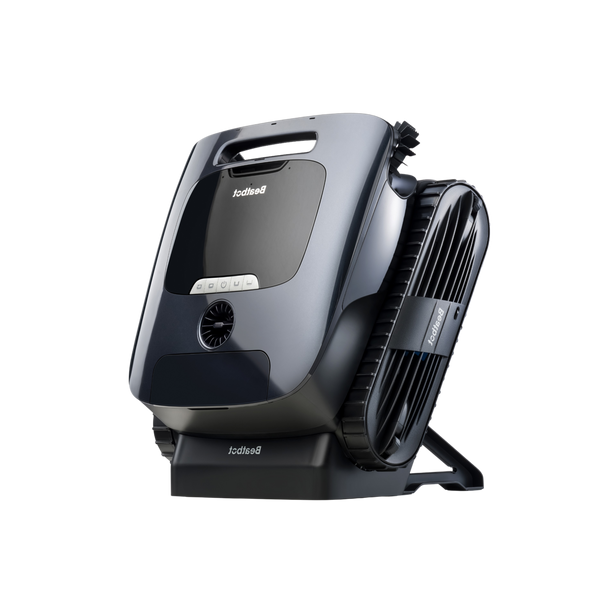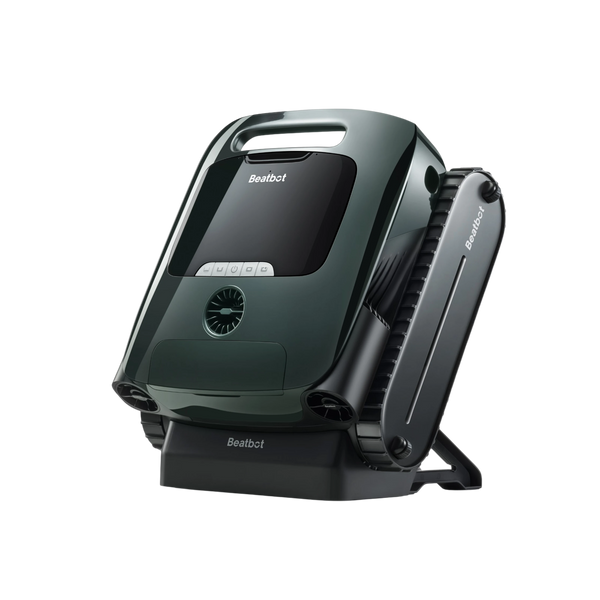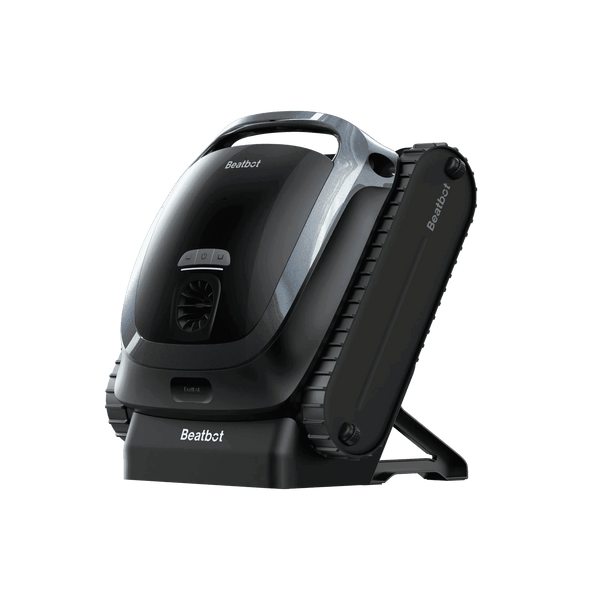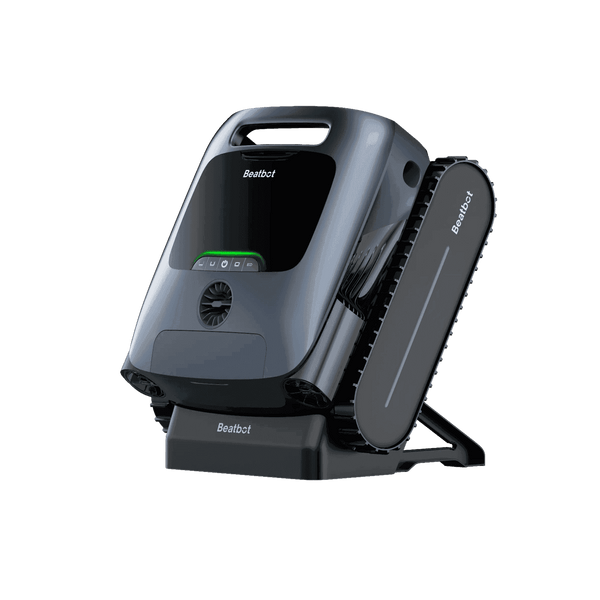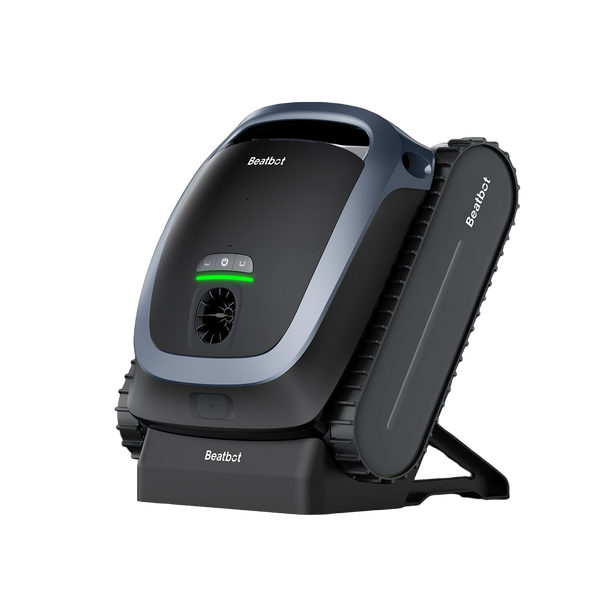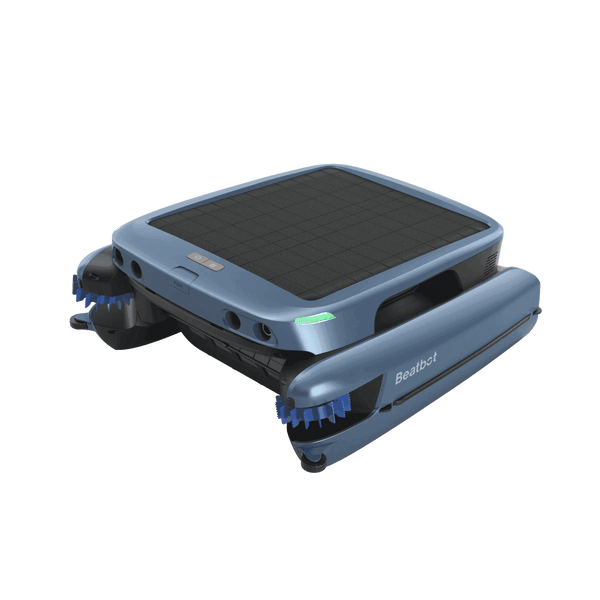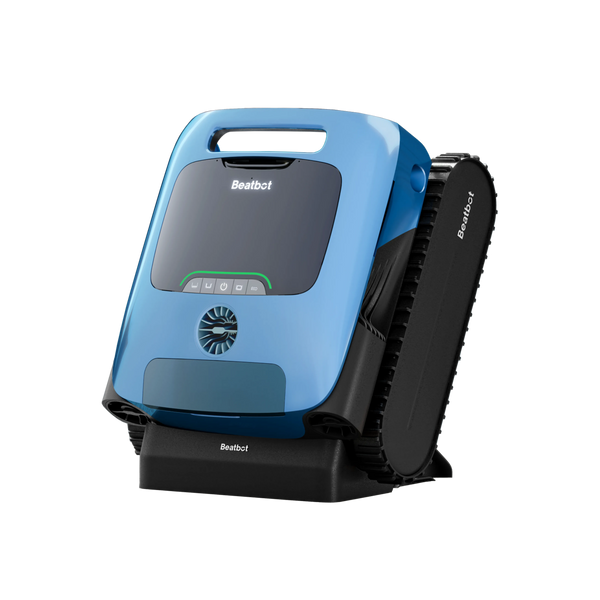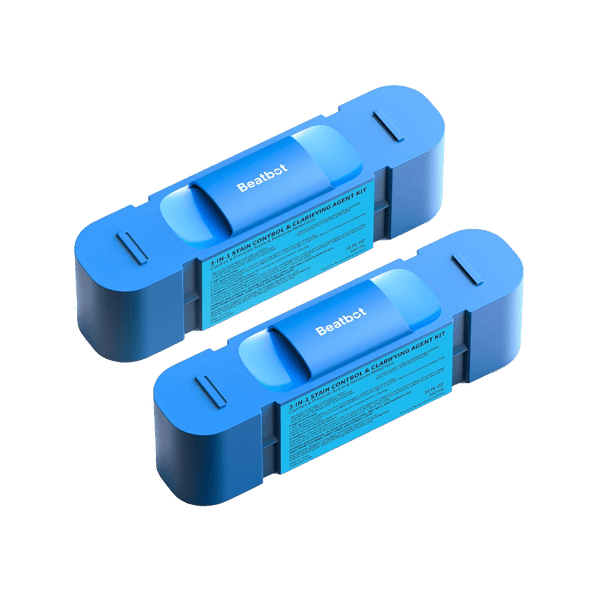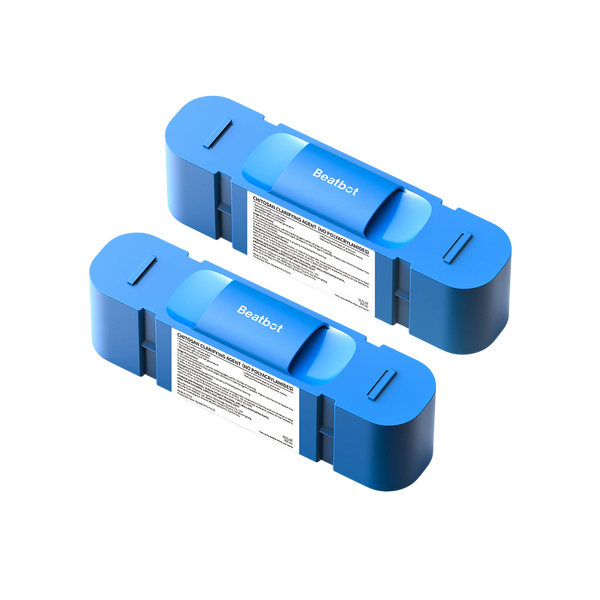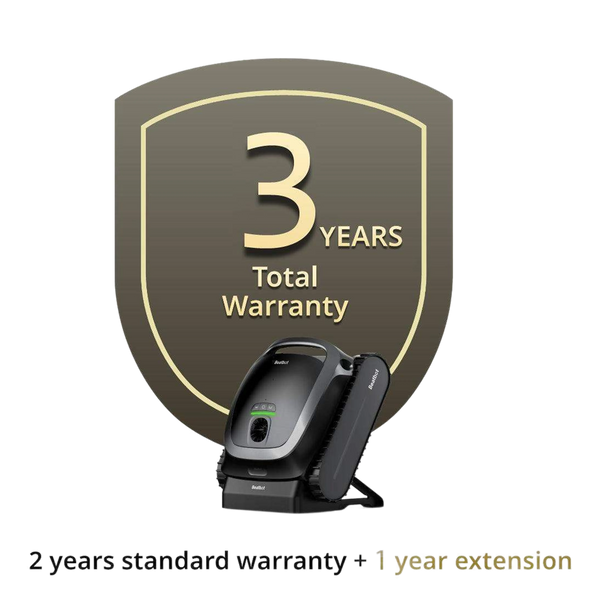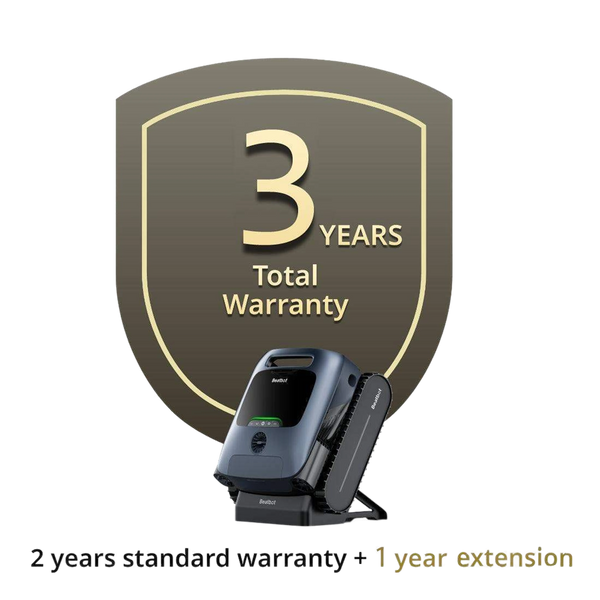Why Is My Pool Water Green: Understanding and Killing Pool Algae
The Plight of Green Pool Water: Algae Takeover
There’s nothing more disappointing than diving into a pool only to find your once-pristine water now resembles a pond. Green pool water, often caused by algae blooms, is not just an eyesore but a health hazard. From green, black, and mustard algae to pollen and chemical reactions, the causes are many, and the traditional solutions are often lacking. It's time to take back your oasis with the Beatbot AquaSense Pro, the ultimate weapon in the fight against algae.
Table of contents

What are pool algae?
Algae are photosynthetic organisms that are widely found in nature, varying in size and shape from microscopic single-celled organisms to large seaweeds. In swimming pools, common types of algae include green algae, black algae, yellow algae, and red algae. These algae not only affect the aesthetics of the pool but can also pose health risks to swimmers.
The growth of algae is usually related to several factors:
- Sunlight Exposure: Extended periods of direct sunlight or the continuous use of pool lights can create optimal conditions for algae to thrive.
- Water Chemistry Imbalance: Insufficient chlorine levels, uneven pH, uncleaned filters, or inadequate water circulation all contribute to an environment where algae can flourish.
- Contaminated Pool Accessories: Pool toys and swimwear that have been in contact with natural bodies of water, such as lakes or rivers, can introduce algae spores into the pool.
The problems caused by algae and the necessity of removal:
Algae not only affect the aesthetics of a pool but can also pose health threats. The most obvious issue is that green water looks very unattractive, and algae combined with other contaminants can dirty the pool surface. Moreover, a large amount of algae can raise the pH level of the pool, leading to the growth of calcium and scale on walls and stairs. Over time, these scales can cause material deterioration and corrosion, leading to more problems.
Due to their rapid reproduction rate, algae can overwhelm and clog filters, worsening water quality and circulation, which further promotes algae growth. Therefore, dealing with algae infestations is key to ensuring the safety and cleanliness of pools.
When algae invade your pool, they don't just float on the surface; they infiltrate your pool's filtration system as well. It's crucial to clean the pool filter to prevent these microorganisms from circulating back into the water. Depending on your filter type, you may need to either backwash it or hose down the cartridge. Regular cleaning of the filter not only helps remove existing algae but also enhances overall water flow and filtration efficiency, creating a healthier swimming environment.
By addressing the algae present in the filter, you break the cycle of contamination and ensure that your pool remains a safe and enjoyable space.
How Long Should the Pool Filter Run After Treating for Algae?
When you've treated your pool for algae, it's crucial to ensure that the water is crystal clear and safe for swimming. To achieve this, let the pool filter operate without interruption. Typically, this process takes about 24 hours. However, the exact time may vary based on several factors:
Severity of Algae Infestation: Heavier algae buildup might require a longer filtration period.
Type of Filter System: Different filter systems (i.e., sand, cartridge, or diatomaceous earth filters) might have varying efficiencies.
Size of the Pool: Larger pools generally take longer to clear compared to smaller ones.
Tips for Ensuring Effective Filtration
Regular Monitoring: Keep an eye on your pool's clarity throughout the filtration process. This allows you to determine if it needs more time.
Backwashing: If you’re using a sand or DE filter, remember to backwash periodically to maintain efficiency.
Water Testing: After filtering, test the water to ensure that chemical levels are balanced and safe for swimmers.
By following these guidelines, you'll help your pool return to pristine condition after an algae treatment.
How to Quickly Remove Algae
When algae appear in the pool, the following steps can be taken for quick removal:
Manual Vacuuming : Use a pool vacuum to remove visible algae and debris. Begin by using a skimmer to clear leaves and other debris from the water’s surface. This ensures that the vacuum can work more efficiently on the pool floor.
Shock Treatment : Apply a high dose of chlorine or other algaecides for effective treatment. This step helps to kill any remaining algae spores in the water, preventing them from regrowing.
Scrubbing Pool Surfaces : Use a stiff-bristle brush to physically scrub away algae. Pay special attention to areas where algae are most likely to cling, such as steps and corners.
Brushing is especially important for ensuring that algae roots are thoroughly removed. If the roots remain, the algae can quickly regrow in the same spots, undoing your hard work. To prevent this, vigorously brush all surfaces of the pool. This step is critical in breaking the cycle of growth and maintaining a clean, algae-free pool environment.
Scrubbing Pool Surfaces : Use a stiff-bristle brush to physically scrub away algae. Focus on areas like walls and steps where algae tend to develop.
Vacuum or Backwash : After scrubbing, vacuum or backwash the pool to remove any remaining dead algae.
Apply Algaecide : Follow the label directions to apply the correct algaecide, ensuring any residual algae are thoroughly treated.
Circulate the Water : Let the water circulate for 24 hours to distribute chemicals evenly throughout the pool.
Final Cleaning : Brush the pool surfaces again and conduct a final vacuum or backwash to ensure all algae are eliminated.
By following these steps, you can maintain a clean and inviting pool environment, ready for swimming without the hassle of unwanted algae growth.
When is the Best Time to Shock a Pool?
To effectively eliminate algae and sanitize your pool, timing is everything. The ideal moment to shock your pool is during the evening or at dusk.
Here's why nighttime is optimal:
Sunlight Reduction : The sun's UV rays can quickly break down chlorine, reducing its effectiveness. When you shock the pool at night, there's no sunlight to interfere, allowing the chlorine more time to work efficiently.
Chlorine Efficiency : Shocking your pool at night gives the chlorine enough time to fully circulate and combat contaminants without being diminished by the sun’s heat.
Algae Elimination : When done after dark, the chemicals have uninterrupted hours to target and destroy algae or bacteria, resulting in a cleaner pool by morning.
Make sure to follow the manufacturer's guidelines for the type of shock treatment you use, ensuring that it’s compatible with your pool’s needs and won’t unintentionally affect pH levels.

Tools and Materials for the Traditional Approach
- Pool Brush: For manual scrubbing, which can be laborious and often ineffective.
- Pool Pole: To extend your reach but still falls short for larger pools.
- Skimmer: For surface debris but misses the deeper, entrenched algae.
- Pool Vacuum: Effective for general cleaning but not designed for algae.
- Safety Goggles: Essential for protecting your eyes during manual cleaning.
- Materials: Including Water Test Kits, Pool Shock, Algaecide, and Pool Water Clarifier, which are part of a routine that can be both costly and time-consuming.
How to Properly Add Algaecide to Your Pool
Adding algaecide to your pool can be an essential step in preventing and tackling algae growth. Follow these guidelines to ensure effective application:
Wait After Shocking
After initially shocking your pool, it's crucial to wait at least 24 hours. This allows the chlorine levels to stabilize, making conditions ideal for adding algaecide.Select the Right Algaecide
Choose an algaecide suitable for your pool type. Different products cater to varying pool sizes and algae types, so read labels carefully before purchasing.Determine the Correct Amount
Refer to the algaecide manufacturer's instructions for specific dosage recommendations. The quantity will depend on your pool's volume, so accurate measurements are key.Application
With the filter system running, slowly pour the algaecide around the edges of the pool. This promotes efficient distribution and circulation of the chemical.Allow for Circulation
Let the pool pump circulate the algaecide for at least 24 hours. This helps to evenly distribute the substance throughout the pool, ensuring it reaches all potential algae breeding grounds.
Additional Tips
Monitor pH Levels
Check and adjust the pH levels to remain between 7.2 and 7.6 to enhance the effectiveness of the algaecide.Routine Maintenance
Regularly skim, brush, and vacuum the pool to prevent algae spores from taking hold.
By following these steps, you can maintain a clear and algae-free pool environment, making it safe and pleasant for swimmers.

Why Traditional Methods Fall Short?
- Chemical Shock Treatments: While effective initially, they can be harsh on the environment and require precise handling to avoid harming swimmers or disrupting the pool's chemical balance.
- Regular Filter Cleaning: Essential for preventing algae but not a standalone solution.
- Manual Scrubbing: Time-consuming, labor-intensive, and often ineffective for larger pools or persistent algae.
Steps to Address a Clogged Pool Filter with Algae
If you find that your pool filter is clogged with algae, here’s a concise guide to get it back in top condition:
-
Shock the Pool :
- Begin by shocking the pool to eliminate any remaining algae. This involves adding a high dose of chlorine or another sanitizer to kill off lingering spores.
-
Brush the Pool Surfaces :
- Thoroughly brush the pool walls and floor to dislodge any attached algae, helping the chemicals work more effectively.
-
Clean the Filter :
- After treatment, check the filter system. It may be necessary to clean the filter by thoroughly rinsing and removing debris. Scrub any visible algae that may have settled in the grooves.
-
Consider Filter Replacement :
- If the filter continues to show signs of blockage despite cleaning efforts, it might be time to replace it. This ensures that your pool’s filtration system remains effective.
Following these steps will help maintain clear, algae-free pool water and ensure your filter operates efficiently. If issues persist, consulting a pool maintenance professional might be beneficial.
Introducing the Beatbot AquaSense Pro: A Revolutionary Approach
The Beatbot AquaSense Pro robotic pool cleaner is designed to be the ultimate solution for pool owners tired of the constant battle with algae. With its innovative features, it offers a comprehensive approach to pool cleaning that traditional methods can't match.
Beatbot AquaSense Pro provides an efficient and automated pool cleaning solution that can:
- Thoroughly clean: With a 5-in-1 cleaning system that reaches every corner of the pool, including the water surface, waterline, floor, walls and water clarification.
- Intelligent path planning: Automatically plans cleaning routes to avoid redundant cleaning and increase efficiency.
- Powerful cleaning performance: A strong suction and brush system effectively removes stubborn algae.
- Easy maintenance: Wireless charging and smart controls simplify maintenance tasks.
Through these features, Beatbot AquaSense Pro helps users easily solve pool algae problems, restoring the pool's clarity and hygiene.
FAQ
1. What types of algae can Beatbot AquaSense Pro effectively remove?
The Beatbot AquaSense Pro is capable of effectively removing various types of algae, including green algae, black algae, and yellow algae. Its powerful suction and brush system are specifically designed to clean stubborn algae, ensuring the pool remains clear and clean.
2. How can Beatbot AquaSense Pro be used to prevent algae growth?
Regular cleaning with the Beatbot AquaSense Pro can help prevent the proliferation of algae. Its 5-in-1 cleaning system covers the water surface, waterline, floor, and walls, reducing the chances of algae growth. Additionally, the intelligent path planning feature ensures that every corner is cleaned, preventing any missed spots.
3. What types of pools is Beatbot AquaSense Pro suitable for?
The Beatbot AquaSense Pro is suitable for pools of various shapes and materials, including concrete, vinyl, fiberglass, and ceramic tile pools. It works efficiently in both in-ground and above-ground pools.
4. What is the battery life of Beatbot AquaSense Pro?
Equipped with a 10,400mAh battery, the Beatbot AquaSense Pro can perform up to 9.5 hours of surface cleaning or 5 hours of floor cleaning on a single charge, ensuring an efficient cleaning experience.
5. Can Beatbot AquaSense Pro work effectively in pools with unbalanced water chemistry?
While the Beatbot AquaSense Pro can clean the pool, maintaining balanced water chemistry is still crucial. It is recommended to test the water quality before use to ensure that the pH and chlorine levels are within the normal range for optimal cleaning results.
6. Is Beatbot AquaSense Pro suitable for saltwater pools?
Yes, the Beatbot AquaSense Pro can be safely used in saltwater pools with a salt concentration not exceeding 5000 ppm. This robot is made of highly corrosion-resistant materials to ensure long-term use in saltwater environments.
Conclusion
No longer settle for the mediocrity of traditional pool cleaning methods. The Beatbot AquaSense Pro is more than just a pool cleaner; it's a solution that revolutionizes the way pool owners tackle algae control and overall pool maintenance. With its powerful cleaning performance, smart features, and eco-friendly design, it's the ultimate solution for keeping pools algae-free and enjoyable for swimmers. Choose Beatbot AquaSense Pro for a cleaner, more sustainable, and hassle-free pool ownership experience.
Relative Blogs
About the author
